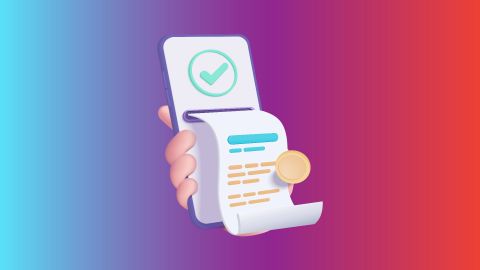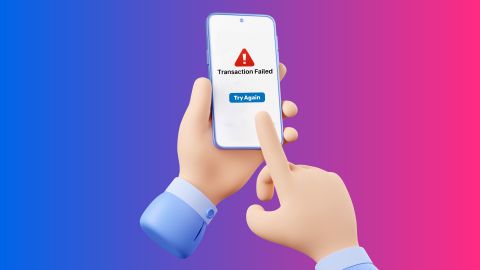Explore the basics of multimeters, including types, uses, and step-by-step guidance on how to use one. Get expert tips and recommendations with Bajaj Finserv.
What is a multimeter
-
-
A multimeter, commonly referred to as a volt-ohm meter or multimeter, is an essential instrument used for measuring various electrical properties such as voltage, current, and resistance. It serves multiple functions, making it invaluable for electricians, engineers, and hobbyists alike. Multimeters can be categorised into two main types: analogue and digital. Each type has its unique features and applications, allowing users to perform precise measurements in different scenarios.
For those managing their internet connectivity and mobile recharges, platforms like Bajaj Pay facilitate easy online transactions for services such as electricity bill payment for your internet.History and evolution of multimeters
The multimeter has evolved from simple analogue devices to sophisticated digital instruments capable of performing numerous measurements. Early models were primarily analogue with limited functionality, while modern digital multimeters incorporate advanced technology like microprocessors and LCD displays, making them more user-friendly and versatile.Types of multimeters: Analog vs. Digital
- Analogue multimeters: Utilise a moving coil mechanism to display readings on a dial. They are less expensive but generally less accurate than digital models. Analogue meters are beneficial for observing trends in voltage and current changes over time.
- Digital multimeters (DMMs): Provide numerical readings on a digital display, offering greater precision and often additional features such as data logging, automatic ranging, and various measurement modes (e.g., capacitance, frequency). DMMs are widely preferred for their ease of use and accuracy.
How does a multimeter work
Multimeters operate by measuring electrical properties through various methods. To measure voltage, the multimeter connects in parallel with the circuit; for current, it must be connected in series. Resistance measurements involve injecting a small current into the circuit and measuring the resulting voltage drop. The device uses an analogue-to-digital converter (ADC) to translate these measurements into readable values on the display. This process allows users to accurately assess electrical circuits and components.Key features of a digital multimeter
- Display type: Typically LCD for clear readings.
- Measurement functions: Voltage (AC/DC), current (AC/DC), resistance, continuity, and sometimes capacitance and temperature.
- Auto-ranging: Automatically selects the appropriate measurement range.
- Data hold function: Freezes the displayed value for easier reading.
- Backlight: Illuminates the display for use in low-light conditions.
Common uses of a multimeter
- Electrical testing: Checking voltage levels in outlets and appliances.
- Troubleshooting: Identifying faults in circuits by measuring resistance and continuity.
- Battery testing: Verifying battery charge levels.
- Component testing: Measuring resistance of resistors or checking diodes.
- Safety checks: Ensuring circuits are de-energised before working on them.
How to use a multimeter: Step-by-step guide
Step Action 1 Turn off power to the circuit being tested. 2 Set the multimeter to the appropriate measurement type (voltage, current, resistance). 3 Connect probes to the correct ports (black to COM, red to VΩmA or A). 4 For voltage, connect probes in parallel; for current, connect in series; for resistance, ensure the circuit is off. 5 Read the measurement displayed on the screen. 6 Disconnect probes in reverse order (red first). 7 Turn off the multimeter to conserve battery. Safety tips while using a Multimeter
1. Always start with the highest range setting to prevent damage.
2. Never measure resistance on live circuits.
3. Use insulated probes and avoid touching metal parts during measurements.
4. Be cautious when measuring high voltages or currents.Troubleshooting with a Multimeter
Multimeters are invaluable for troubleshooting electrical issues. For instance:- Checking circuit continuity: Use continuity mode to determine if a circuit is complete by listening for an audible beep when probes touch connected points.
- Voltage drop testing: Measure voltage across components to identify faulty parts by checking if they receive appropriate voltage levels.
- Identifying shorts: Measure resistance between points that should not be connected; low resistance indicates a short circuit.
Importance of calibration in multimeters
Calibration ensures that multimeters provide accurate readings over time. Regular calibration against known standards helps maintain measurement precision and reliability, essential for professional applications.Advantages and disadvantages of digital multimeters
Advantages Disadvantages High accuracy More expensive Easy to read Requires batteries Multiple functions Can be complex for beginners Auto-ranging capability Sensitive to environmental factors Choosing the right multimeter for your needs
When selecting a multimeter, consider factors such as measurement range, accuracy requirements, portability, and specific features needed for your applications. Digital multimeters are generally recommended for most users due to their versatility and ease of use.Applications of multimeters in various fields
Multimeters find applications across multiple industries including:- Electrical engineering: For circuit design and testing.
- Automotive: Diagnosing electrical issues in vehicles.
- HVAC: Measuring electrical components in heating and cooling systems.
- Home improvement: Ensuring safety during electrical installations.
Importance of electricity payment online
Paying electricity bills online saves time and effort. Platforms like Bajaj Pay offer unmatched convenience:- Instant payments: No delays or long queues.
- Wide accessibility: Pay anytime, anywhere.
- Safe transactions: High-end encryption ensures secure payments.By choosing Bajaj Pay, you support sustainability through efficient energy management.
Steps to pay your electricity bill online on the Bajaj Finserv website
Paying the electricity bill through the Bajaj Finserv website is simple. Here are the steps:1. Visit the Bajaj Finserv website
2. Navigate to ‘ALL PAYMENTS’ under the ‘PAYMENTS’ section and click on it
3. Select the ‘ELECTRICITY BILL’ option from under ‘BILLS & RECHARGES’
4. A pop-up will request for sign-in, enter your mobile number and click on ‘GET OTP’ to login
5. Select your service provider from the list of power suppliers
6. Enter your ‘CUSTOMER ID’ and click on ‘FETCH YOUR BILL’
7. Verify the bill amount and click on ‘PAY NOW’
8. Pay using the multiple payment methods available such as Bajaj Pay UPI, debit card, credit card, net banking, and Bajaj Pay Wallet.
Post the transaction you will be receiving a confirmation to intimate about successful payment.Fee and charges
A convenience fee of up to 2% will be charged depending on the transaction amount and payment mode (inclusive of applicable taxes). For more information on fees and charges, click here.
Note: For failed transactions, the total amount including charges except taxes are reversed.
-
Recharge and Pay Bills
Mobile Prepaid
Mobile Postpaid
Broadband Bill Payment
Electricity Bill Payment
Bajaj Finserv App for All Your Financial Needs and Goals
Trusted by 50 million+ customers in India, Bajaj Finserv App is a one-stop solution for all your financial needs and goals.
You can use the Bajaj Finserv App to:
Apply for loans online, such as Instant Personal Loan, Home Loan, Business Loan, Gold Loan, and more.
Explore and apply for co-branded credit cards online.
Invest in fixed deposits and mutual funds on the app.
Choose from multiple insurance for your health, motor and even pocket insurance, from various insurance providers.
Pay and manage your bills and recharges using the BBPS platform. Use Bajaj Pay and Bajaj Wallet for quick and simple money transfers and transactions.
Apply for Insta EMI Card and get a pre-approved limit on the app. Explore over 1 million products on the app that can be purchased from a partner store on Easy EMIs.
Shop from over 100+ brand partners that offer a diverse range of products and services.
Use specialised tools like EMI calculators, SIP Calculators
Check your credit score, download loan statements and even get quick customer support—all on the app.
Download the Bajaj Finserv App today and experience the convenience of managing your finances on one app.
You can use the Bajaj Finserv App to:
Apply for loans online, such as Instant Personal Loan, Home Loan, Business Loan, Gold Loan, and more.
Explore and apply for co-branded credit cards online.
Invest in fixed deposits and mutual funds on the app.
Choose from multiple insurance for your health, motor and even pocket insurance, from various insurance providers.
Pay and manage your bills and recharges using the BBPS platform. Use Bajaj Pay and Bajaj Wallet for quick and simple money transfers and transactions.
Apply for Insta EMI Card and get a pre-approved limit on the app. Explore over 1 million products on the app that can be purchased from a partner store on Easy EMIs.
Shop from over 100+ brand partners that offer a diverse range of products and services.
Use specialised tools like EMI calculators, SIP Calculators
Check your credit score, download loan statements and even get quick customer support—all on the app.
Download the Bajaj Finserv App today and experience the convenience of managing your finances on one app.
Frequently asked questions
What is the difference between analogue and digital multimeters?
Analog multimeters: Use a needle on a scale to display readings. They are durable and better for observing trends or fluctuations but can be less precise and harder to read.
Digital multimeters: Provide numerical readings on an LCD screen. They are more accurate, easier to use, and often come with advanced features like auto-ranging and data storage.
Digital multimeters: Provide numerical readings on an LCD screen. They are more accurate, easier to use, and often come with advanced features like auto-ranging and data storage.
Can a multimeter measure AC and DC voltage?
Yes, a multimeter can measure both AC and DC voltage. Most multimeters have separate settings for AC (usually denoted as “~” or “ACV”) and DC (denoted as “-” or “DCV”), allowing users to test various circuits.
What are the safety precautions for using a multimeter?
1. Check the multimeter’s rating: Ensure it is rated for the voltage or current you are measuring.
2. Inspect the leads: Verify that the probes and cables are in good condition.
3. Select the correct setting: Choose the appropriate mode and range to avoid damage to the multimeter or incorrect readings.
4. Avoid measuring live circuits in resistance mode: It can damage the meter or cause injury.
5. Handle with care: Use one hand when testing high voltages to minimise the risk of electrical shock.
6. Wear protective gear: Use insulated gloves and safety glasses when working with high-voltage circuits.
7. Disconnect power for certain tests: Turn off power before checking continuity or resistance.
2. Inspect the leads: Verify that the probes and cables are in good condition.
3. Select the correct setting: Choose the appropriate mode and range to avoid damage to the multimeter or incorrect readings.
4. Avoid measuring live circuits in resistance mode: It can damage the meter or cause injury.
5. Handle with care: Use one hand when testing high voltages to minimise the risk of electrical shock.
6. Wear protective gear: Use insulated gloves and safety glasses when working with high-voltage circuits.
7. Disconnect power for certain tests: Turn off power before checking continuity or resistance.
What are the common uses of a multimeter?
A multimeter is commonly used to measure voltage, current, and resistance in electrical circuits. It is also used for troubleshooting wiring issues, testing batteries, checking the continuity of circuits, and diagnosing faults in appliances or electronic devices.
How do I calibrate a multimeter?
To calibrate a multimeter, connect it to a standard reference source, such as a known voltage or resistance. Adjust the multimeter’s calibration screw or settings to match the reference value. For digital multimeters, professional recalibration services are often recommended for precise adjustments.
Show More
Show Less




